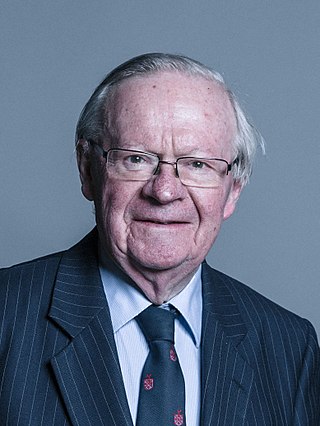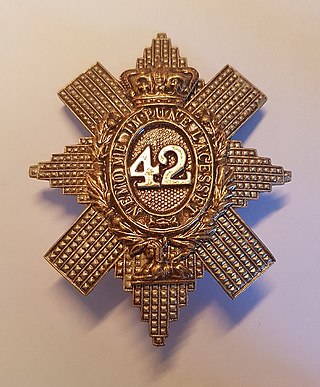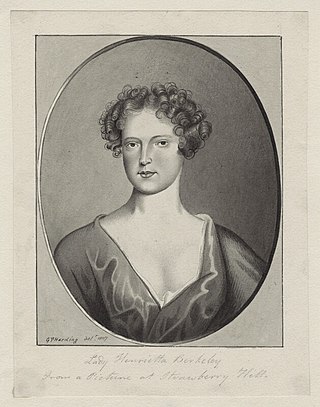The Royal British Bank was a British joint-stock bank, established under a Royal Charter in 1849, that collapsed in 1856. This caused a scandal. The circumstances were described by The Economist as "an extraordinary example of the little trouble the public take to think for themselves". [1]
The bank's main founders were John MacGregor, a Member of Parliament for Glasgow, and Edward Mullins, a solicitor. After difficulties in raising the necessary capital, the bank was launched in 1849. [2] : 703
After press articles alleging substantial losses appeared in 1856, the share price dropped and in September 1856 the bank suspended operations after experiencing a run, leaving 6,000 depositors owed money. [2] : 704
It then became apparent that various directors and former directors had taken substantial sums from the bank, though most of the directors in post at the time of the collapse had not done so. [2] : 715–716
The eight surviving directors—among them Henry Dunning Macleod—were put on trial in February 1858. [3] (The bank's founder, MacGregor, had fled to France and died there in 1857. [4] ) They were tried for conspiracy to defraud the bank's customers at the Court of Queen's Bench before the Lord Chief Justice, Lord Campbell. On the first day of the trial, the Prince of Wales attended and sat on the bench next to the Lord Chief Justice. The jury found each of the defendants guilty of the charges and they were given sentences ranging from a nominal fine of one shilling to imprisonment for up to one year. [2] : 718 By July 1858, however, only one of the convicted, the former manager of the bank, and arguably the least influential person among the convicted, remained in prison; the contrast with the treatment of the directors in the City of Glasgow Bank collapse is perhaps instructive.
The collapse gave rise to a new legislation tightening banking regulation, including the publication of balance sheets and the auditing of accounts. [1]

William Thomson, 1st Baron Kelvin, was a British mathematician, mathematical physicist and engineer born in Belfast. He was the Professor of Natural Philosophy at the University of Glasgow for 53 years, where he undertook significant research and mathematical analysis of electricity, the formulation of the first and second laws of thermodynamics, and contributed significantly to unifying physics, which was then in its infancy of development as an emerging academic discipline. He received the Royal Society's Copley Medal in 1883, and served as its president from 1890 to 1895. In 1892, he became the first British scientist to be elevated to the House of Lords.

The Dean Cemetery is a historically important Victorian cemetery north of the Dean Village, west of Edinburgh city centre, in Scotland. It lies between Queensferry Road and the Water of Leith, bounded on its east side by Dean Path and on its west by the Dean Gallery. A 20th-century extension lies detached from the main cemetery to the north of Ravelston Terrace. The main cemetery is accessible through the main gate on its east side, through a "grace and favour" access door from the grounds of Dean Gallery and from Ravelston Terrace. The modern extension is only accessible at the junction of Dean Path and Queensferry Road.

Field Marshal Colin Campbell, 1st Baron Clyde,, was a British Army officer. After serving in the Peninsular War and the War of 1812, he commanded the 98th Regiment of Foot during the First Opium War and then commanded a brigade during the Second Anglo-Sikh War. He went on to command the Highland Brigade at the Battle of Alma and with his "thin red line of Highlanders" he repulsed the Russian attack on Balaclava during the Crimean War. At an early stage of the Indian Mutiny, he became Commander-in-Chief, India and, in that role, he relieved and then evacuated Lucknow and, after attacking and decisively defeating Tatya Tope at the Second Battle of Cawnpore, captured Lucknow again. Whilst still commander-in-chief he dealt with the "White Mutiny" among East India Company troops, and organised the army sent east in the Second Opium War.

John Roddick Russell MacGregor, Baron MacGregor of Pulham Market,, is a politician from the United Kingdom. A member of the Conservative Party, he was the Member of Parliament (MP) for South Norfolk from 1974 to 2001. He served in the Cabinet as Chief Secretary to the Treasury (1985–87), Minister of Agriculture, Fisheries and Food (1987–89), Secretary of State for Education and Science (1989–90), Leader of the House of Commons and Lord President of the Council (1990–92), and Secretary of State for Transport (1992–94). He was made a life peer in 2001.
James Moncreiff, 1st Baron Moncreiff LLD was a Scottish lawyer and politician.
John Thomas Wheatley, Baron Wheatley, was a Scottish Labour politician and judge.

Henry Hawkins, 1st Baron Brampton,, known as Sir Henry Hawkins between 1876 and 1899, was an English judge. He served as a Judge of the High Court of Justice between 1876 and 1898. R. F. V. Heuston described him as "probably the worst judge on the English Bench in the nineteenth century."
Henry Dunning Macleod was a Scottish economist and lawyer.
Overend, Gurney & Company was a London wholesale discount bank, known as "the bankers' bank", which collapsed in 1866 owing about £11 million, equivalent to £1,084 million in 2021. The collapse of the institution triggered a banking panic.

The 42nd Regiment of Foot was a Scottish infantry regiment in the British Army also known as the Black Watch. Originally titled Crawford's Highlanders or the Highland Regiment and numbered 43rd in the line, in 1748, on the disbanding of Oglethorpe's Regiment of Foot, they were renumbered 42nd, and in 1751 formally titled the 42nd (Highland) Regiment of Foot. The 42nd Regiment was one of the first three Highland Regiments to fight in North America. The unit was honoured with the name Royal Highland Regiment in 1758. It's informal name Black Watch became official in 1861. In 1881, the regiment was amalgamated with another unit under the Childers Reforms into The Royal Highland Regiment , being officially redesignated The Black Watch in 1931. In 2006, the Black Watch became part of the Royal Regiment of Scotland.

Sir Alexander James Edmund Cockburn, 12th Baronet was a British jurist and politician who served as the Lord Chief Justice for 21 years. He heard some of the leading causes célèbres of the nineteenth century.

Admiral Sir Sydney Colpoys Dacres was an officer of the Royal Navy who saw service during the Greek War of Independence, when he was involved in an attack on the Turkish forces at Morea, and later during the Crimean War. Born into a substantial naval dynasty during the Napoleonic Wars, he eventually rose to the rank of Admiral and became First Naval Lord. His only significant action as First Naval Lord was to press for the abolition of masts. He went on to be Visitor and Governor of Greenwich Hospital.
John MacGregor (1797–1857) was a Scottish statistician and politician.

The Clerkenwell explosion, also known as the Clerkenwell Outrage, was a bombing in London on 13 December 1867. The Irish Republican Brotherhood, nicknamed the "Fenians", exploded a bomb to try to free one of their members being held on remand at Clerkenwell Prison. The explosion damaged nearby houses, killed 12 people and left 120 injured. None of the prisoners escaped. The event was described by The Times the following day as "a crime of unexampled atrocity", and compared to the "infernal machines" used in Paris in 1800 and 1835 and the Gunpowder Treason of 1605. The bombing was later described as the most infamous action carried out by the Fenians in Britain in the 19th century. It enraged the public, causing a backlash of hostility in Britain which undermined efforts to establish home rule or independence for Ireland.
Events from the year 1836 in Scotland.
Events from the year 1802 in Scotland.

Thomas Charles McAnea, also known as Hologram Tam, was a Scottish master counterfeiter, regarded as one of the most skillful in Europe with regard to banknote security holograms.

Lady Henrietta Berkeley was an English aristocrat notorious for having an affair with her elder sister's husband, Lord Grey of Warke. The affair began in 1681 when Berkeley was not yet an adult and was discovered by her mother the following year. Berkeley was removed to the family seat at Epsom. She escaped and went into hiding in lodging houses in London, under the protection of Grey. Her father, George Berkeley, 1st Earl of Berkeley, sued her lover in a trial which became a sensation in 1682.